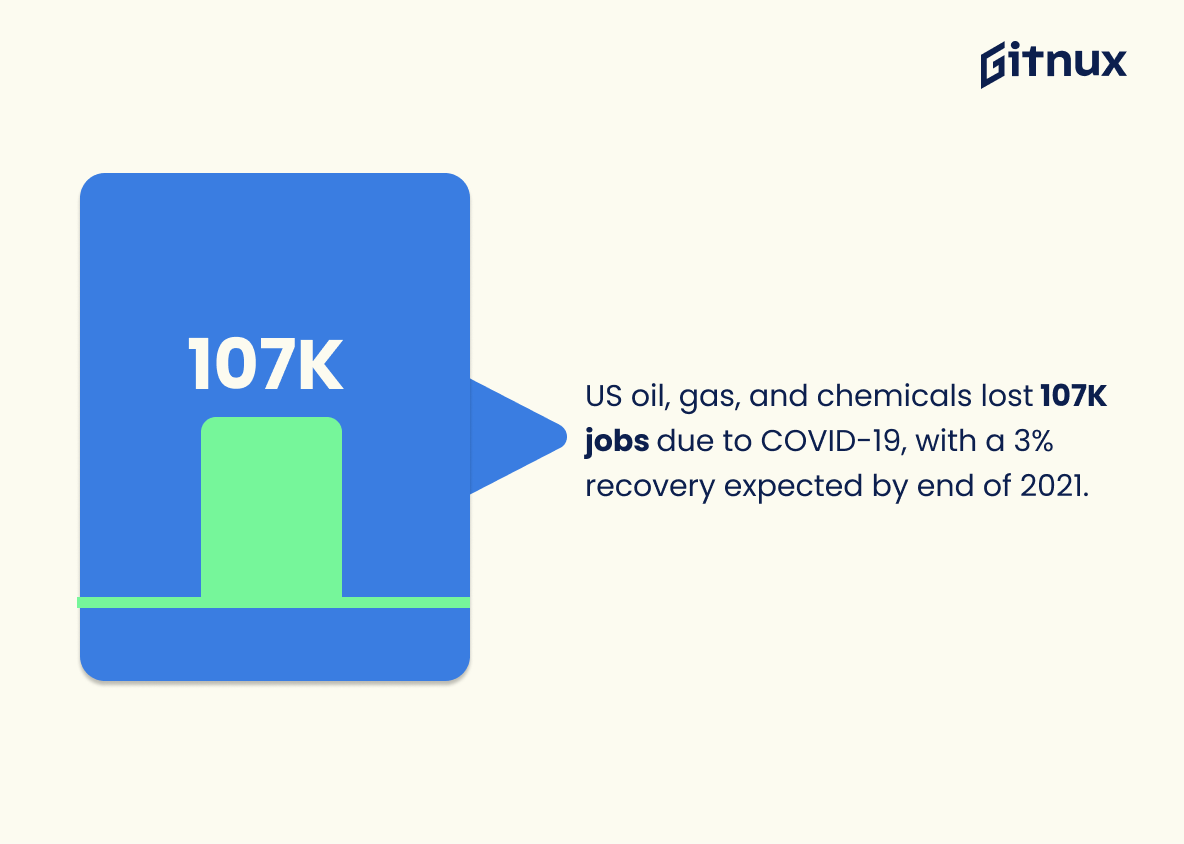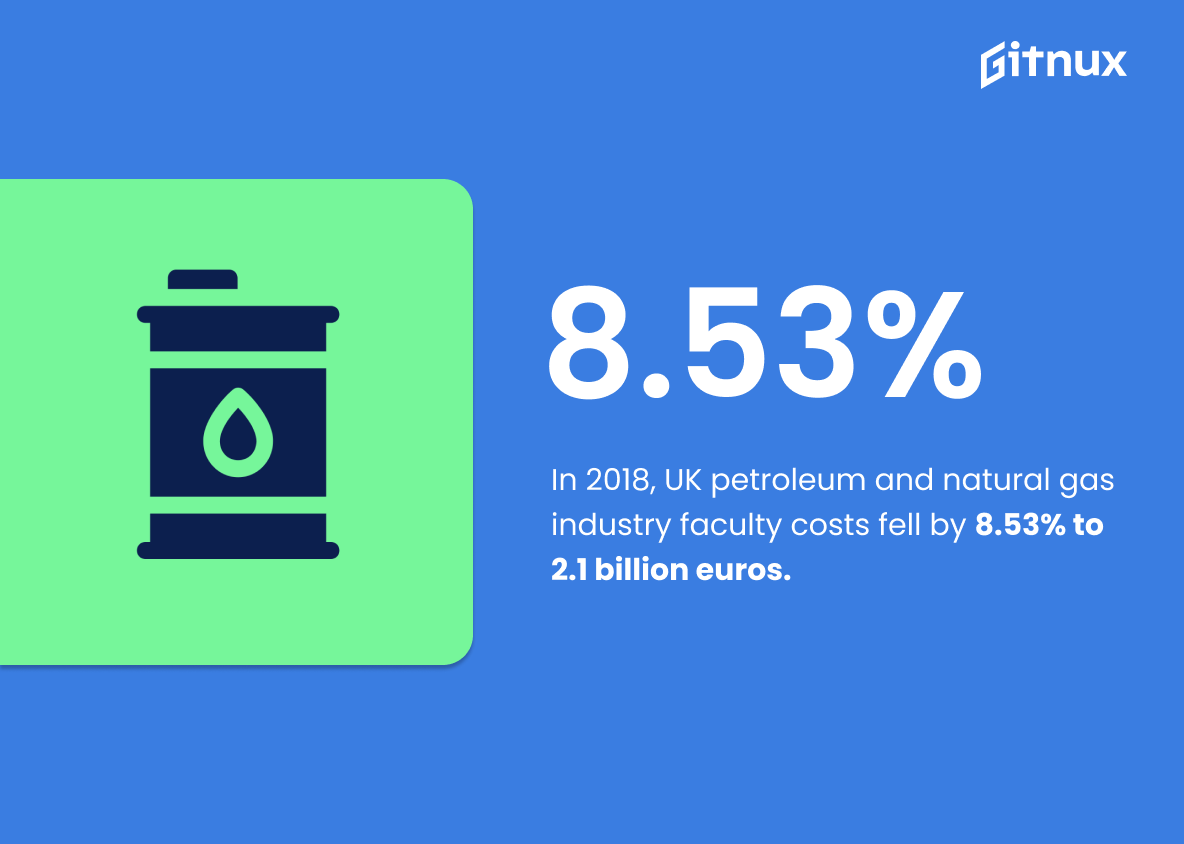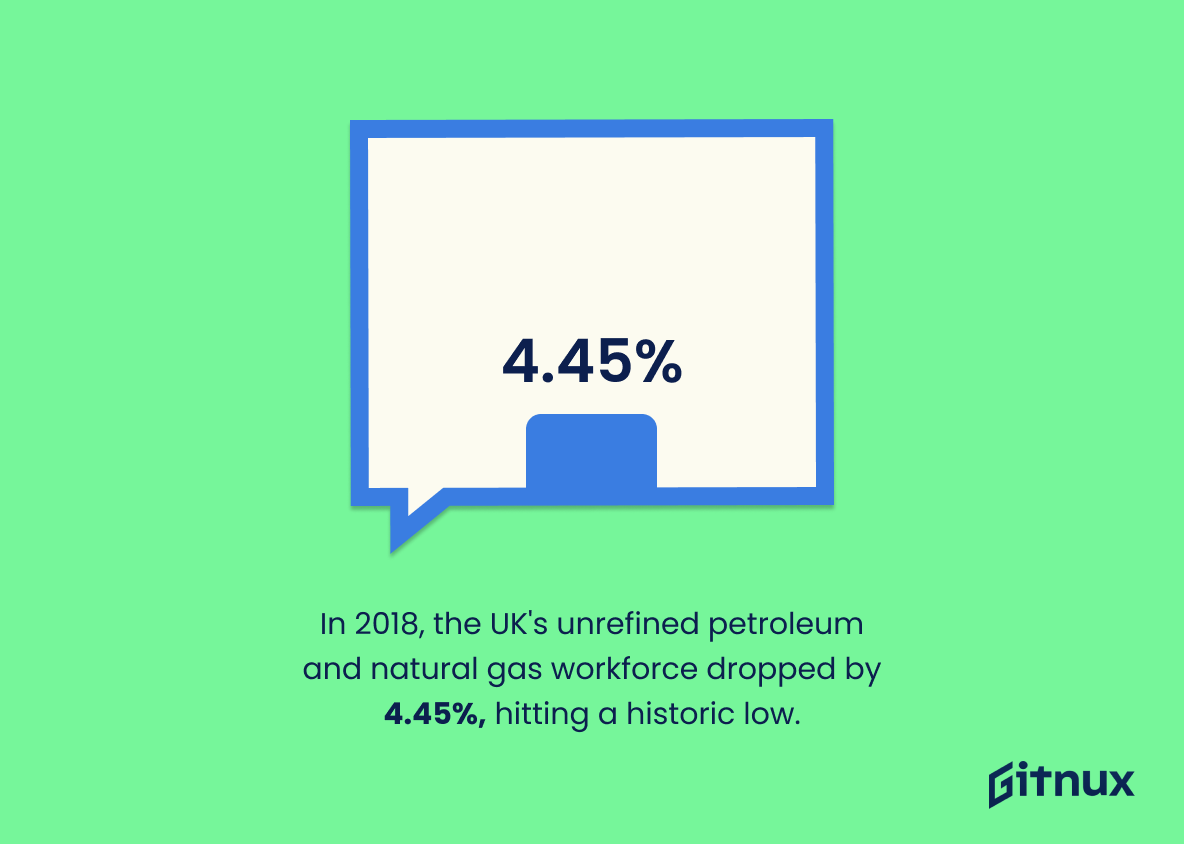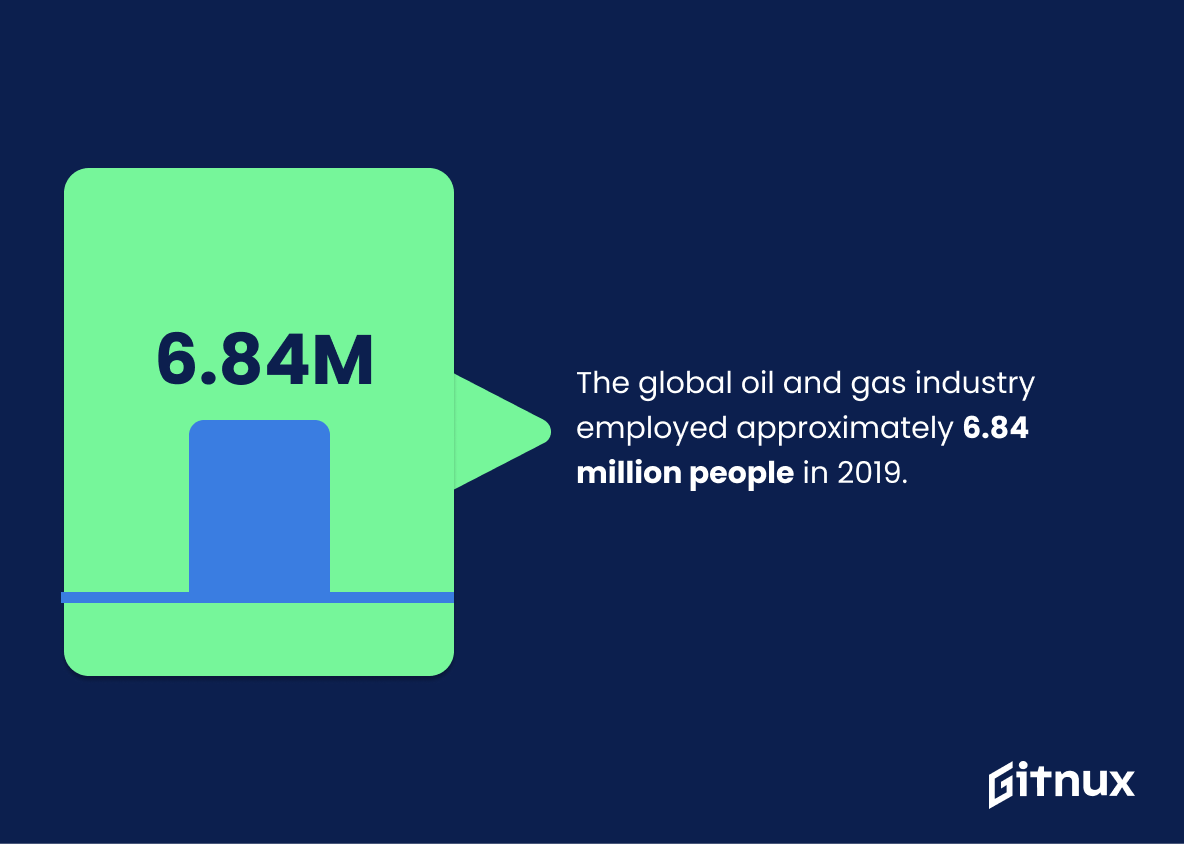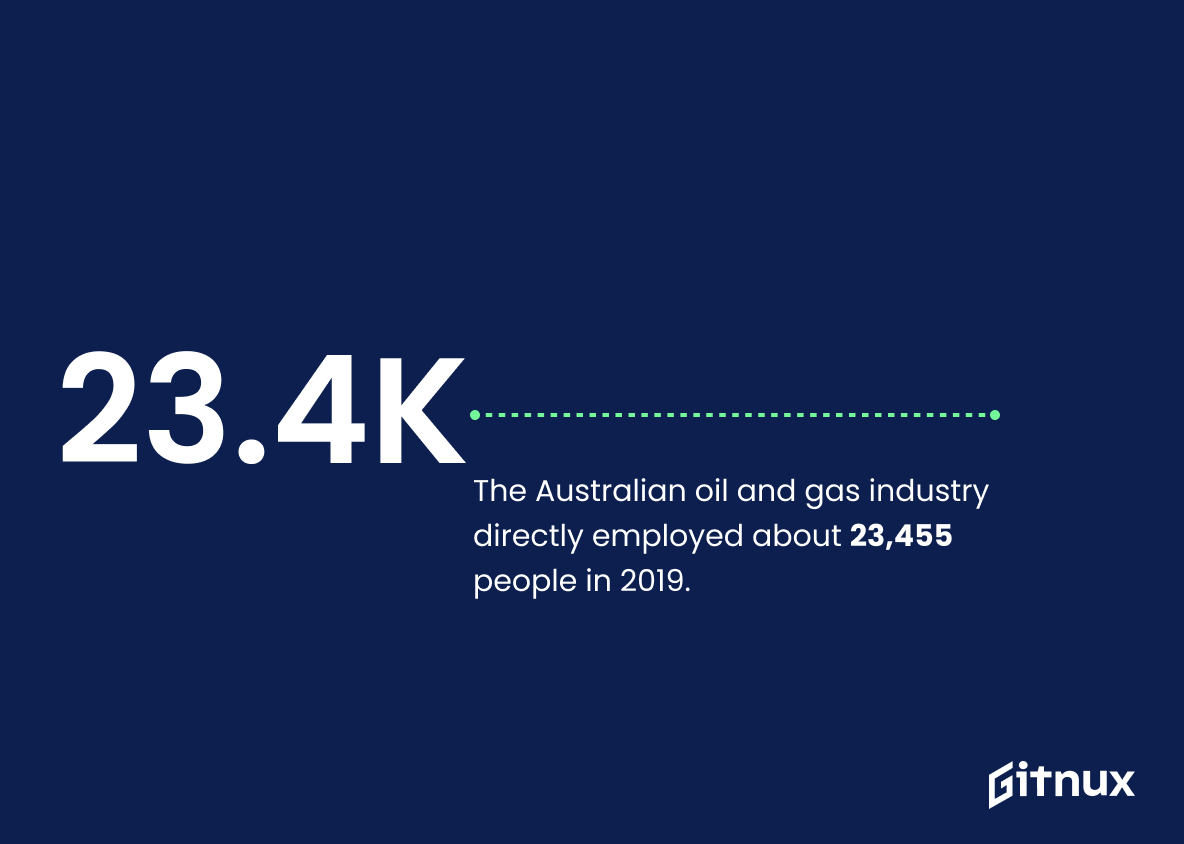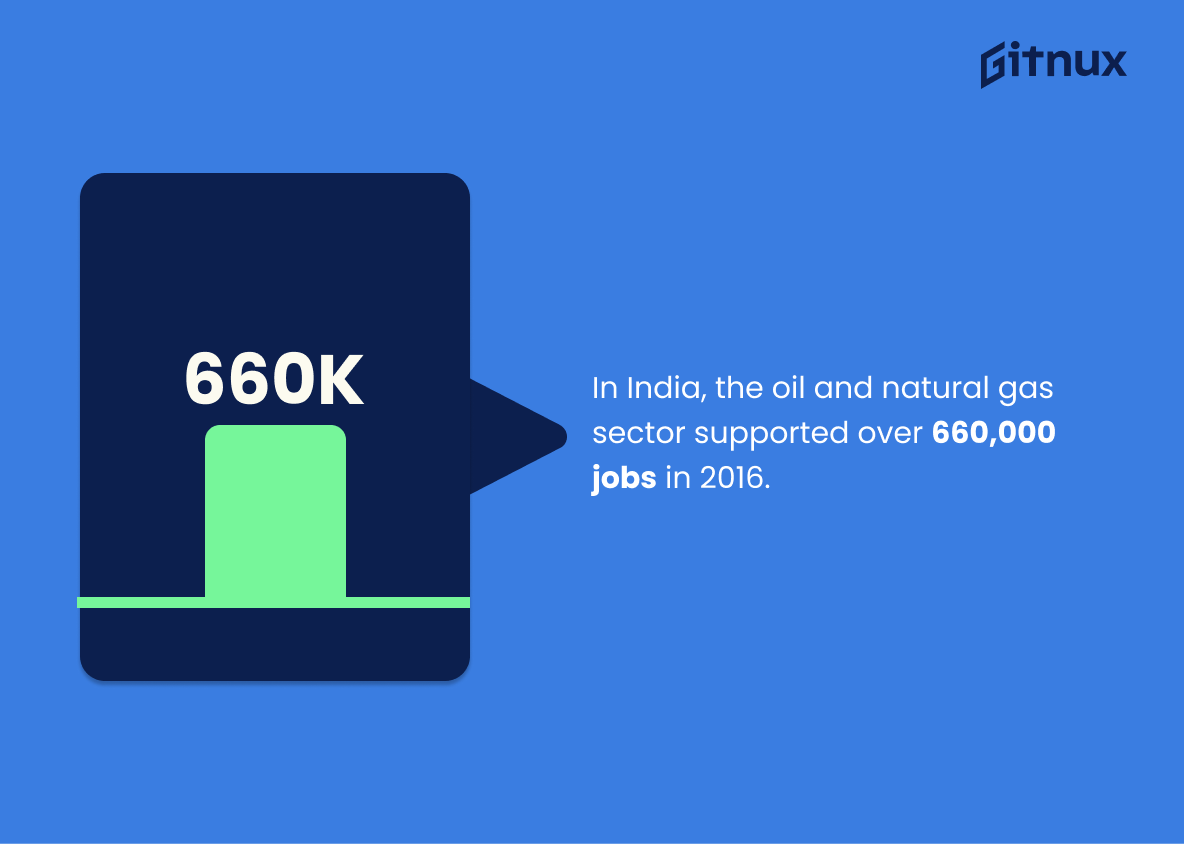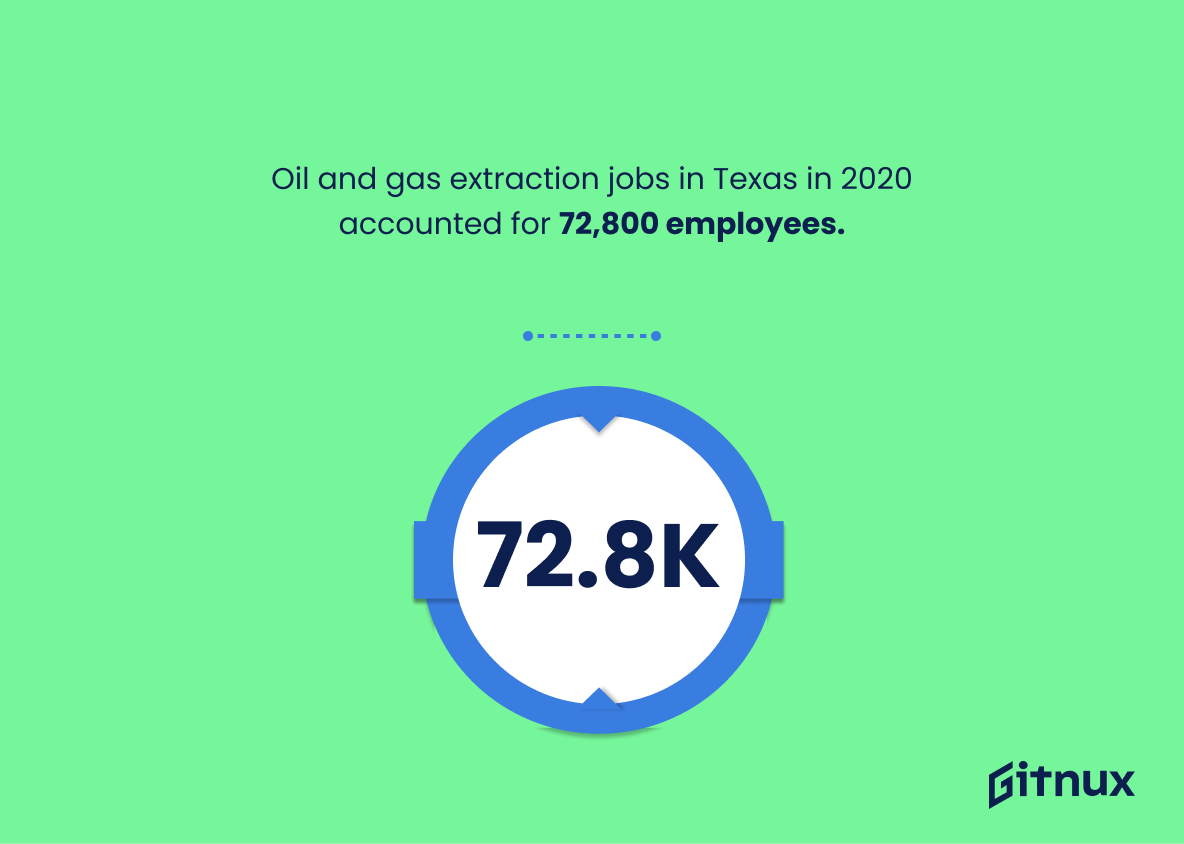The oil and gas industry is a major employer in many countries around the world. As such, it is important to understand the employment statistics associated with this industry. This blog post will provide an overview of the current employment statistics in the oil and gas industry, including the number of jobs, wages, and other important information.
We will also discuss the trends in the industry and how they may affect future employment opportunities. Finally, we will provide some tips for those looking to enter the oil and gas industry.
Oil And Gas Employment: The Most Important Statistics
The oil, natural gas, and chemicals industry lost 107 thousand jobs in the US between December 2019 and April 2020 due to the coronavirus pandemic, and only 3% of these jobs are projected to be recovered by the end of 2021.
The number of workers in the UK’s extraction of unrefined petroleum and natural gas industry decreased by 4.45% in 2018, the lowest number of workers in the observed period.
Oil And Gas Employment Statistics Overview
The total employment of the oil, gas, and petrochemical industry in the U.S. in 2015 was 1.39 million individuals.
In 2015, 20.3% of workers in the upstream operations section of the Oil, Gas, and Petrochemical industry in the United States were female, compared to 14.3% in the upstream venture section. This highlights the gender gap in the Oil and Gas industry, and can be used to inform initiatives to increase female representation in the industry.
Australia’s oil and gas industry workforce declined by 25% in 2020, more than any other nation due to the coronavirus pandemic.
This shows the impact of the coronavirus pandemic on the oil and gas industry. It also demonstrates that Australia was more affected than other countries, such as the United States, which only experienced an 11% decline in its oil and gas workforce.
The oil, natural gas, and chemicals industry lost 107 thousand jobs in the US between December 2019 and April 2020 due to the coronavirus pandemic, and only 3% of these jobs are projected to be recovered by the end of 2021.
The number of representatives in the oil and gas industry in Norway increased until 2014 and then decreased until 2017, before increasing again in 2018.
Oil and gas industry job openings have seen steady growth since April 2020, despite a decrease in July 2022.
Despite a decrease in job openings in July 2022, the oil and gas industry has seen steady growth since April 2020. This indicates that the industry is still growing and that there are still opportunities for employment in the oil and gas industry.
Faculty costs in the UK’s extraction of rough petroleum and natural gas industry decreased by 8.53% in 2018, totaling 2.1 billion euros.
Thus, the industry is becoming more cost-efficient, which could lead to more job opportunities for workers in the industry. Additionally, the decrease in faculty costs could lead to more money being available to invest in research and development, which could result in new technologies and job opportunities.
The number of workers in the UK’s extraction of unrefined petroleum and natural gas industry decreased by 4.45% in 2018, the lowest number of workers in the observed period.
This proves the declining trend of employment in the oil and gas industry in the UK and could be a sign of a decrease in demand for oil and gas, or a shift in the industry towards automation and other technologies. This could have significant implications for the economy, as well as the workers in the industry, as it could lead to job losses and a decrease in economic activity.
Russia produced 64 billion more cubic meters of characteristic gas in 2021 than in 2020, making it the second-leading producer of this fossil fuel in the world.
Russia had the largest demonstrated natural gas reserves in 2020, accounting for 20% of the world’s total reserves, which shows that Russia is a major player in the oil and gas industry.
The global oil and gas industry employed approximately 6.84 million people in 2019.
The industry is a major employer, providing jobs to millions of people around the world. This highlights the need for governments and businesses to ensure that the industry remains a viable and sustainable source of employment in the future.
In the United States, there were approximately 157,200 oil and gas extraction jobs in 2020.
This highlights the sheer number of people employed in this sector, and the impact it has on the economy. It also serves as a reminder of the importance of the oil and gas industry in the US, and the need to ensure that these jobs remain secure and well-paid.
The UK oil and gas industry supports over 365,000 jobs according to 2021 data.
This highlights the significant contribution the industry makes to the UK economy, with over 365,000 people relying on it for their livelihoods. This is a clear indication of the industry’s importance to the country and its citizens.
Canadian oil and gas employment reached approximately 164,400 jobs in 2020.
Despite the economic downturn caused by the pandemic, the oil and gas sector was able to maintain a significant number of jobs, demonstrating its importance to the Canadian economy. This statistic is a reminder of the industry’s strength and its potential for growth in the future.
The Australian oil and gas industry directly employed about 23,455 people in 2019.
The industry is a major employer, providing jobs for thousands of people across the country. This is especially important in the current economic climate, where many industries are struggling to stay afloat. The statistic also highlights the need for continued investment in the industry, to ensure that it remains a major source of employment and economic growth.
In India, the oil and natural gas sector supported over 660,000 jobs in 2016.
The sector is a major employer, providing livelihoods to over 660,000 people in 2016. This is a significant contribution to the Indian economy and demonstrates the sector’s potential to create jobs and drive economic growth.
Oil and gas extraction jobs in Texas in 2020 accounted for 72,800 employees.
The industry is a major employer in Texas, providing jobs for thousands of people. This statistic is especially relevant in the context of a blog post about oil and gas employment statistics, as it provides a concrete example of the industry’s impact on the state’s economy.
Oil and gas extraction employment in Russia declined by 3.5% between 2019 and 2020.
The industry is facing a decline in employment, which could have a significant impact on the economy. This could mean fewer jobs, lower wages, and a decrease in investment in the sector. It is a sign that the industry is struggling and could be a warning sign of further economic hardship in the future.
The Middle East’s oil and gas industry added a net increase of 29,770 job opportunities by the end of 2020.
Despite the economic downturn caused by the pandemic, the industry was able to create nearly 30,000 new job opportunities, providing a much-needed boost to the region’s economy. This is a positive sign for the future of the industry and a reminder of its importance to the region.
Mexico’s oil and gas industry employed 9,989 people in 2019.
The industry is a major employer in the country, providing jobs to nearly 10,000 people in 2019. This is significant, as it demonstrates the industry’s contribution to the nation’s workforce and its overall economic health.
Norway’s oil and gas sector accounted for 5.5% of total employment in 2019.
The oil and gas sector is a major source of employment in Norway, and its continued success is essential for the nation’s economic stability. This statistic is a reminder of the importance of the oil and gas industry to Norway and its citizens, and serves as a reminder of the need to ensure its continued success.
Approximately 24,000 people were employed in Brazil’s oil and gas industry in 2018.
The industry is a major employer in the country, providing jobs to a significant number of people. This is an important factor to consider when looking at the overall economic health of Brazil, as it demonstrates the industry’s contribution to the nation’s workforce.
The United States experienced a loss of 107,000 oil and gas jobs due to the COVID-19 pandemic during 2020.
This highlights the immense job losses that have occurred in the sector, and serves as a warning of the potential economic consequences of the pandemic. This statistic is an important reminder of the need for continued support for the oil and gas industry, and for the workers who have been affected by the pandemic.
A report from PwC estimates that global oil and gas industry employment will rise by 3% between 2014 and 2035.
The industry is likely to remain a major employer in the years to come, and that there will be a steady increase in the number of jobs available. This is important information for those looking to enter the industry, as it suggests that there will be plenty of opportunities for them to pursue.
Nigeria’s oil and gas industry employed approximately 29,000 people in 2019.
The industry is a major employer, providing jobs for thousands of people and contributing to the country’s economic growth. This is especially important in a country where unemployment is a major issue, and it highlights the need for continued investment in the sector to ensure its continued success.
The oil and gas industry in Indonesia provided jobs for approximately 120,000 people in 2018.
The industry is a major employer in the country, providing jobs for a significant number of people. This highlights the importance of the industry to the Indonesian economy and the livelihoods of its citizens.
In 2021, the European Union employed at least 844,000 people in its oil and gas industry.
The oil and gas industry is a major employer in the EU, providing jobs and economic stability to many people. This statistic is especially relevant in the context of a blog post about oil and gas employment statistics, as it provides a snapshot of the current state of the industry in the region.
The United Arab Emirates’ oil and gas sector accounted for 1.49% of its total employment in 2017.
The sector is a major employer, providing jobs to a significant portion of the population. This highlights the need for the country to ensure that the sector remains a viable and sustainable source of employment for its citizens.
In 2019, approximately 5,000 people were employed in Kazakhstan’s oil and gas industry.
5,000 people were employed in Kazakhstan’s oil and gas industry in 2019 is a telling statistic that speaks volumes about the importance of this sector in the country’s economy. The oil and gas industry is a major employer in Kazakhstan, providing jobs and livelihoods to thousands of people. This statistic is a reminder of the importance of the oil and gas industry in the country and the need to ensure that it remains a viable and sustainable source of employment.
Conclusion
Oil and gas employment statistics show that the industry is still a major source of jobs in the United States. Despite the challenges of the past few years, the industry is expected to continue to provide a significant number of jobs in the future.
The industry is also expected to remain an important part of the global economy, providing energy and jobs to many countries around the world. With the right policies in place, the industry can continue to provide jobs and economic stability for many years to come.
References
1 – Total oil and gas industry employment by occupation U.S. 2015 | Statista
2 – Female share in oil gas industry employment U.S. 2015 | Statista
3 – Oil and gas employment change by country 2020 | Statista
4 – US coronavirus employment impact in oil & gas 2021 | Statista
5 – Norway: employee number in the oil and gas industry 2008-2018 | Statista
6 – Oil and gas job openings worldwide | Statista
7 – Extraction of crude oil & natural gas industry: personnel costs 2009-2018 | Statista
8 – Total number of employees in the crude petroleum and natural gas extraction sector in the United Kingdom (UK) from 2007 to 2018 | Statista
9 – Natural gas production in Russia 2021 | Statista
10 – Proved natural gas reserves in Russia 2020 | Statista



